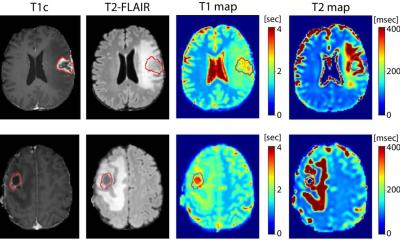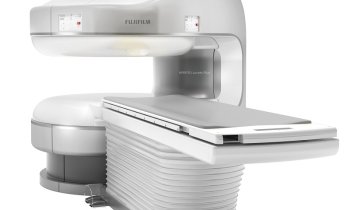MRI in Europe
By Joe McEntee, Editor of medicalphysicsweb
It's time to end the uncertainty
What a difference a few days can make. The last week in September kicked off with more dire warnings about the potentially disastrous impact that the Physical Agents (Electromagnetic Fields) Directive 2004/40/EC will have on the use of MRI in clinical practice and medical research across the European Union (EU).
Fast forward to the weekend, however, and it now appears that common sense is set to prevail and the doomsday scenario - the end of MRI in Europe as we know it – will be averted. ‘It looks as if the Directive will be delayed for four years to allow for substantial amendment,’ a source close to the matter told medicalphysicsweb on the Friday.
For the uninitiated, the controversy surrounding the EMF Directive needs a bit of explaining. The Directive was drafted and proposed by the Directorate-General (DG) for Employment and Social Affairs within the European Commission (the executive branch of the EU) and subsequently rubber-stamped by the European Parliament and the Council of Ministers. As things stand, it must be incorporated within the national legislation of the 27 EU member states by April 2008.
In terms of the underlying motivation, it’s hard to find fault: the Directive is intended to protect the health and safety of workers who come into contact with electromagnetic fields – among them clinical and research staff who to carry out MRI procedures. The trouble is, the scientific evidence points to a number of situations in which MRI workers exceed the proposed exposure-limit values for low-frequency, time-varying magnetic fields set out in the Directive. One example is interventional MRI, where the interventionalist is very likely to be positioned within the gradient-coil field to be able to reach the patient.
There are other problems, stemming from the fact that the gradient fields actually spill beyond the end of the magnet bore for most scanner designs. In practical terms, this means it will no longer be possible for an anaesthetist to stand by a patient who is unconscious, or for a nurse to stand by a nervous child. The ultra-low frequency limit will also prevent engineers climbing into scanners to maintain them, without costly magnet ramp-downs. It may even prevent staff walking around most magnets, or standing by magnets and turning their heads rapidly.
The case against
All of these issues, and more, were revisited at the European Cancer Conference (ECCO 14) in Barcelona, Spain, earlier this week. Dag Rune Olsen, chairman of the physics committee of the European Society for Therapeutic Radiology and Oncology (ESTRO), told a press conference on Monday that the eight million MRI patient examinations carried out across the EU every year will have to stop if the Directive is enacted into law in all the member states. ‘The Directive sets limits to occupational radiation exposure which will mean that anyone working or moving near MRI equipment will breach them, thus making it possible for them to sue their employers. Even those maintaining or servicing the equipment may be affected.’
A study by Stuart Crozier of the University of Queensland, Australia, into operator exposure to electromagnetic fields from MRI, published by the UK Heath and Safety Executive (HSE) in June, found that anyone standing within about one metre of an MRI scanner in use would breach the exposure limits laid down in the Directive. The EC has accepted the Crozier findings, and says it will consider the HSE report together with the study it has commissioned itself (an interim report is due at the end of October) when deciding whether to amend the Directive or to extend the period before implementation.
Olsen, like many fellow physicists, clinicians and the MRI equipment makers, advocates an evidence-based approach to the EMF legislation. ‘Policy-making should be based on sound science, and to my knowledge there is no scientific evidence of long-term adverse health effects of exposure to static or fluctuating magnetic fields that are commonly found during MR scanning. Hasty decisions without scientific support will in this case have a severe impact on medical diagnostics and must thus be avoided,’ he noted in Barcelona.
Watch this space
What’s certain is that all the legal uncertainty currently surrounding MRI practice in Europe is in no-one’s interest – not the clinical community’s, not the research community’s, not the equipment makers’ and most definitely not the patients’. The good news, however, is that the battle for hearts and minds in Brussels, and more specifically in the DG for Employment and Social Affairs, appears to be moving decisively in favour of lobbyists for the MRI community, medicalphysicsweb has learned.
Our source confirmed that the Alliance for MRI, a lobbying group established by the European Society of Radiology earlier this year, has won round senior political advisers within the Directorate-General. ‘They [the advisers] can see the big picture and realize that the Directive [in its current form] is a big problem – political suicide. We’re 90% certain that the European institutions will agree to the proposed four-year delay,’ he explained.
Word is that the Commission will issue an official announcement on the status of the EMF Directive the week beginning 8 October. After that, the proposed delay to the Directive’s implementation must go before the European Parliament and then the Council of Ministers (though legal advisers in the Commission have apparently agreed to accelerate the process with a view to a November sign-off for putting things on hold).
Political machinations aside, assuming the Directive gets parked – and that’s still not officially confirmed, remember – the hard work of redrafting will begin almost immediately. It is to be hoped that the conclusions of the Crozier study, as well as the Commission’s own investigation into EMF and MRI, underpin an evidence-based approach to any ongoing technical re-evaluation.
• See also: ‘Numerical models map MRI’s impact. Watching the directives: big trouble for MRI and Probing MRI-induced electric fields’ on medicalphysicsweb.
30.10.2007











